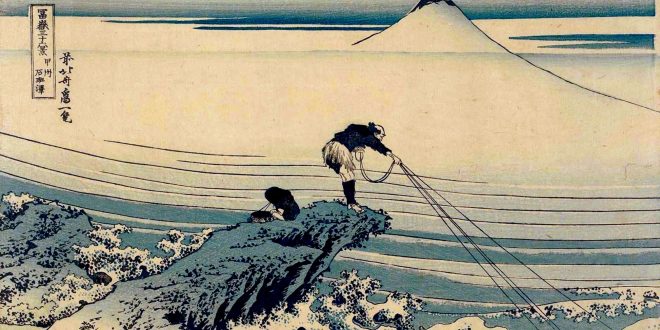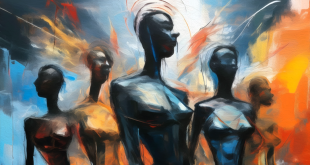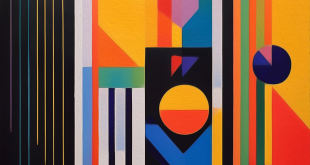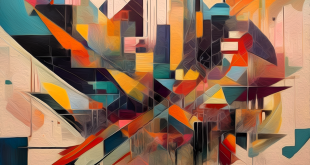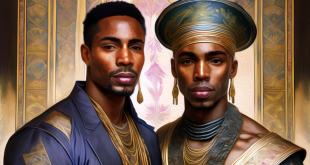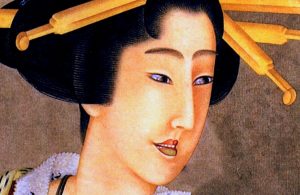 KATSUSHIKA HOKUSAI 1/4 – He had a long career, but he produced most of his important work after age of 60. He began painting around the age of six, perhaps learning from his father. Born in Tokyo, he is best known as author of the woodblock print series thirty-six views of Mount Fuji. He was a Japanese artist of the Edo period, influenced by styles of Chinese painting. This serie ensured his fame (both in Japan and overseas). His father never made him an heir (suposed his mother was a concubine).
KATSUSHIKA HOKUSAI 1/4 – He had a long career, but he produced most of his important work after age of 60. He began painting around the age of six, perhaps learning from his father. Born in Tokyo, he is best known as author of the woodblock print series thirty-six views of Mount Fuji. He was a Japanese artist of the Edo period, influenced by styles of Chinese painting. This serie ensured his fame (both in Japan and overseas). His father never made him an heir (suposed his mother was a concubine).
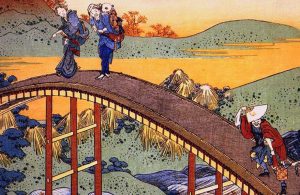 KATSUSHIKA HOKUSAI 2/4 – He was known by at least 30 names during his lifetime. His father sent him to work in a bookshop and lending library – a popular type of institution, where reading books made from wood-cut blocks was a popular entertainment of the period. When he was entered the studio of Katsukawa Shunshō (an artist of ukiyo-e, a style of wood block prints and paintings), he focused on images of the courtesans and Kabuki actors.
KATSUSHIKA HOKUSAI 2/4 – He was known by at least 30 names during his lifetime. His father sent him to work in a bookshop and lending library – a popular type of institution, where reading books made from wood-cut blocks was a popular entertainment of the period. When he was entered the studio of Katsukawa Shunshō (an artist of ukiyo-e, a style of wood block prints and paintings), he focused on images of the courtesans and Kabuki actors.
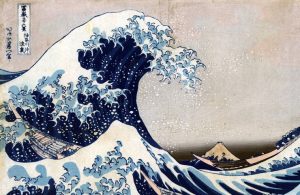 KATSUSHIKA HOKUSAI 3/4 – Around 1800 he developed further his use of ukiyo-e for other purposes than portraiture. Upon the death of Shunshō, he began to explore other styles of art (including European styles) He was exposed to French and Dutch copper engravings. He was expelled from the Katsukawa school, but this event was inspirational, because had supported his artistic style development. He changed the subjects of his works.
KATSUSHIKA HOKUSAI 3/4 – Around 1800 he developed further his use of ukiyo-e for other purposes than portraiture. Upon the death of Shunshō, he began to explore other styles of art (including European styles) He was exposed to French and Dutch copper engravings. He was expelled from the Katsukawa school, but this event was inspirational, because had supported his artistic style development. He changed the subjects of his works.
 KATSUSHIKA HOKUSAI 4/4 – He developed his own style and produced a huge body of work, much of it highly original and of fine quality. His works started to be focused on landscapes and images of the daily life of Japanese people. This change of subject was a breakthrough in ukiyo-e and in his career. A fire had destroyed his studio with lots of his artwork. When he was dying in one May day, he exclaimed: “If only Heaven will give me just another few years, I could become a real painter.”
KATSUSHIKA HOKUSAI 4/4 – He developed his own style and produced a huge body of work, much of it highly original and of fine quality. His works started to be focused on landscapes and images of the daily life of Japanese people. This change of subject was a breakthrough in ukiyo-e and in his career. A fire had destroyed his studio with lots of his artwork. When he was dying in one May day, he exclaimed: “If only Heaven will give me just another few years, I could become a real painter.”
To pursue this issue, you can also read:
http://meetingbenches.com/2016/11/mountain-perfect-shape-wonderful-images-mount-fuji/
 Meeting Benches World art in all forms
Meeting Benches World art in all forms
